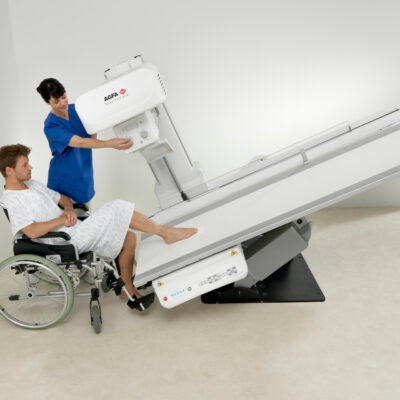Injuries can happen at any time during daily activities, whether at work, home, or during exercise. Many of these injuries are preventable with the right awareness, habits, and guidance. Physiotherapy plays a crucial role not only in treating injuries but also in preventing them before they occur. By integrating physiotherapy principles into everyday life, individuals can improve their strength, flexibility, and body mechanics, which reduces the risk of strains, sprains, and other common injuries.
For those seeking expert advice on injury prevention, the Stefanie Frank Praxis offers personalized physiotherapy programs tailored to individual needs. This clinic provides education and interventions that help people maintain optimal physical health, ensuring they move safely and efficiently throughout their day.
Understanding How Injuries Occur
Most injuries result from a combination of factors such as poor posture, muscle imbalances, repetitive movements, and lack of proper conditioning. For example, sitting for extended periods with incorrect posture can cause back and neck pain, while improper lifting techniques can lead to strains or herniated discs. Repetitive actions, especially without adequate rest or warm-up, can cause overuse injuries like tendonitis.
Physiotherapists assess these risk factors by evaluating a person’s movement patterns, muscle strength, and flexibility. Identifying weaknesses or dysfunctions early allows for corrective measures that prevent injury. Whether it is an office worker dealing with repetitive strain or an athlete preparing for intense training, the principles of injury prevention remain similar.
Key Physiotherapy Strategies for Injury Prevention
1. Postural Correction and Ergonomics
One of the simplest but most effective ways to prevent injuries is to maintain proper posture during daily activities. Physiotherapists guide patients in adjusting their sitting, standing, and lifting techniques. Ergonomic assessments at workplaces can significantly reduce strain on muscles and joints. For example, adjusting the height of a computer monitor or the position of a chair can help maintain the natural alignment of the spine and reduce fatigue.
2. Strengthening and Conditioning
Weak muscles are more prone to injury. Physiotherapy includes targeted strengthening exercises that focus on core stability and balance. A strong core supports the spine, improves posture, and reduces the risk of falls and strains. Conditioning exercises tailored to an individual’s lifestyle help build endurance and resilience, preparing the body for daily physical demands.
3. Flexibility and Mobility Exercises
Tight muscles and stiff joints can limit range of motion, increasing the risk of injury. Stretching and mobility exercises are integral to physiotherapy programs. Regular practice helps maintain joint health and muscle elasticity. These exercises are especially important for people with sedentary jobs or those who perform repetitive movements.
4. Education on Safe Movement Patterns
Physiotherapists teach patients how to move safely during activities such as lifting, bending, or exercising. Learning proper techniques protects joints and soft tissues from undue stress. For example, bending at the knees instead of the waist when lifting objects reduces pressure on the lower back.
5. Balance and Coordination Training
Falls are a major cause of injuries, especially among older adults. Physiotherapy includes balance and coordination training to enhance stability and prevent falls. This type of training improves neuromuscular control and reaction times, which are essential for avoiding accidents.
Applying Injury Prevention in Daily Life
Incorporating these physiotherapy strategies into everyday routines does not require extensive time or equipment. Simple adjustments can make a significant difference:
- Take frequent breaks from sitting and practice standing or walking stretches.
- Use ergonomic supports such as lumbar cushions or adjustable desks.
- Perform core strengthening exercises three times a week.
- Include stretching routines focused on major muscle groups, especially after physical activity.
- Pay attention to body signals like pain or stiffness and seek professional advice early.
When to Seek Professional Help
While many injury prevention measures can be self-managed, consulting a physiotherapist is highly beneficial for personalized care. The Stefanie Frank Praxis specializes in evaluating individual risks and designing customized prevention programs. Early intervention can stop minor issues from becoming chronic problems.
Physiotherapy assessment can uncover hidden weaknesses or imbalances that contribute to injury risk. Working with a professional ensures exercises are done correctly and adjustments are made as needed for optimal results.
Benefits of Injury Prevention Through Physiotherapy
Preventing injuries with physiotherapy leads to numerous benefits beyond avoiding pain and disability:
- Enhanced physical performance in daily activities and sports
- Reduced medical costs associated with injury treatment
- Increased confidence and independence
- Better long-term joint and muscle health
- Improved overall quality of life
By proactively managing physical health, individuals can enjoy an active and pain-free lifestyle well into their later years.
Conclusion
Preventing injuries is an essential component of maintaining health and well-being, and physiotherapy offers effective tools to achieve this goal. Through postural correction, strengthening, flexibility training, and education on safe movement, physiotherapy empowers people to protect their bodies from common injuries. Clinics like the Stefanie Frank Praxis provide expert guidance tailored to your unique needs, helping you incorporate injury prevention strategies seamlessly into your everyday life. Taking these proactive steps today can safeguard your mobility and independence for the future.





